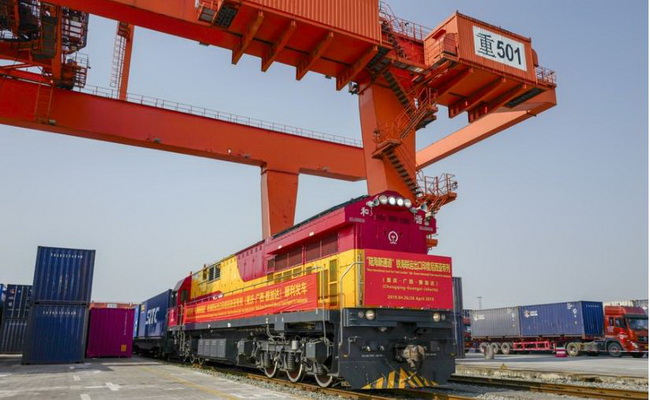New land-sea trade corridor in west China connects 264 ports in 96 countries, regions

The land-sea freight train of the New International Land-Sea Trade Corridor heading for Indonesia waits to depart in southwest China's Chongqing, April 26, 2019. (Xinhua/Liu Chan)
The New International Land-Sea Trade Corridor in west China has seen its connections reach 264 ports in 96 countries and regions by the first quarter of this year, according to the logistics and operation coordination center of the corridor.
The New International Land-Sea Trade Corridor is a trade and logistics passage jointly built by western Chinese provincial regions and Singapore.
With Chongqing as the operation center and Guangxi, Guizhou, Gansu, Qinghai, Xinjiang Uygur Autonomous Region and other western provinces as key joints, the corridor can reach all parts of the world through the Beibu Gulf of Guangxi Zhuang Autonomous Region in the south by railway, sea, road and other means of transport, greatly shortening the time to go to sea.
Over 500 categories of goods are transported through the corridor, and eight lines for cross-border highway shuttle buses are operating regularly, covering the entire China-Indochina Peninsula, introduced Liu Wei, head of the logistics and operation coordination center of the corridor.
Statistics showed that from January to March this year, the rail-sea combined freight trains starting from Chongqing made 393 trips, up 133 percent year on year, with 19,588 TEUs or 2.43 billion yuan of goods transported, up 130 percent or 117 percent year on year.
Besides, trips made by cross-border highway buses shuttling between Chongqing and the Association of Southeast Asian Nations (ASEAN) registered 743 trips, up 84 percent year on year, with 1,672 TEUs or 417 million yuan of goods transported, up 84 percent or 149 percent year on year.
The international railway combined freight trains running between Chongqing and Vietnam transported 410 TEUs of goods, up 55 percent year on year.


